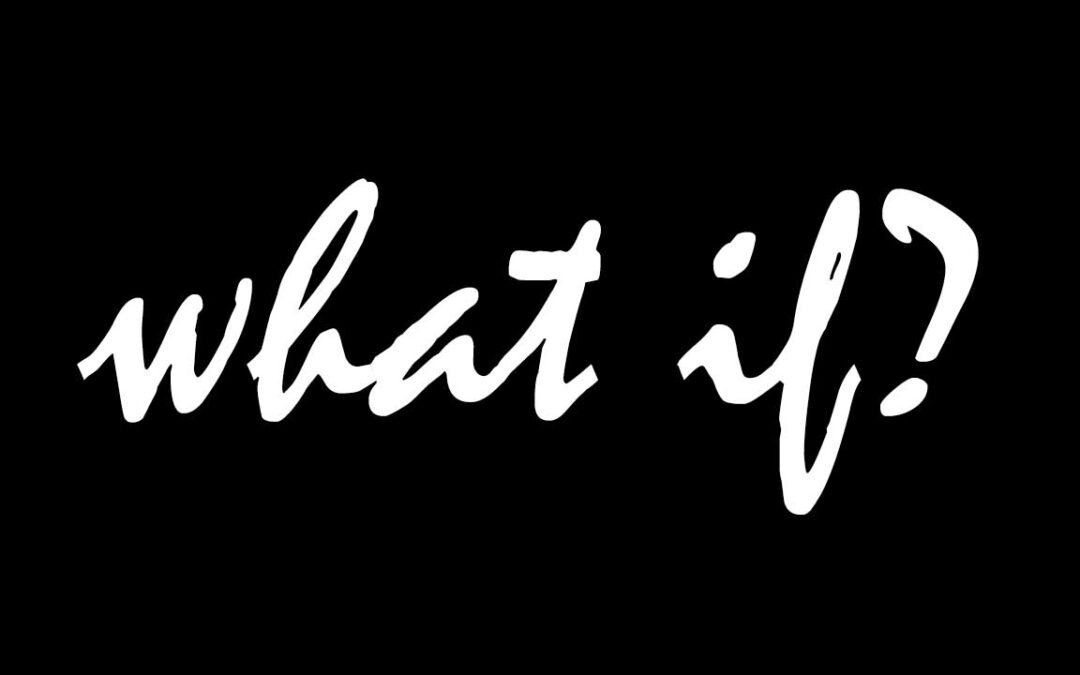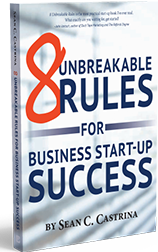This is a million and billion-dollar question “What if?” What is the 1 audacious thing you and your business seeking to do that no one else can do or is doing?
I’m going to share with you two words that in business, change everything. It’s the question that will absolutely change how you think about starting a business and how you come up with a great business idea. People ask me all the time is this a great idea or what is a great idea? I’m going to give you the question that asks this and then I’m going to go through all the illustrations of it and how it knocks down each domino to a great business.
What If?
What are you talking about Sean? Well, let’s just go through some businesses and their models.
What if we could offer the largest online bookstore and make it the easiest one to buy from? Well, that was Amazon. That was basically their value proposition when they got started.
What if we could get your package or a letter delivered overnight? That was FedEx. I’m not saying you can always deliver on that “what if”, and that may keep you from moving forward.
I always say if you look at the “what if” of billion-dollar companies, it’s a massive “what if”.
What if we could manufacture a car that a working American can afford? That was Ford!
What if we could make a cartoon into a full-length movie? That was Disney.
What if our shoes and attire could be worn by the most recognized athletes in the world? That was Nike.
I can keep going. Every business that you think of has this huge “what if”.
What if we could create software that can make computers usable to everyone in their home? Bill Gates and Microsoft. Before Microsoft, only banks and governments had computers. Everyday Americans didn’t have computers, but Bill Gates had an audacious “what if”.
What if we can put your entire music library in your back pocket? The iPod.
What if we could have a cable station that had sports on it 24 hours a day. What if we could create enough content? ESPN.
What If Reveals Your Value Proposition
So let’s look at Amazon. Now obviously that has changed and they offer everything in retail, but let’s take that immediate value proposition. What’s that Sean? Well, that is what they agree to offer their customers. So that’s in your business plan, what is the value proposition, why will customers buy from you. It’s your “what if”.
Why are they going to buy? Because we’re going to create the simplest, easiest to use online book store that will have the largest selection in the world. Their “what if” became their value proposition.
This applies to every company.
FedEx’s value proposition: we will get your letter or package, overnight, we guarantee it. That’s why customers buy from them. When I go to ship something I think three different things: if I really don’t care when it’ll get there, I use the Post Office. If I need to get it there in two to three days, I use UPS. But if I have to get it their overnight, I use FedEx. Why? They beat that value proposition into my head.
Let’s take it even further.
What If Reveals Your Target Customer
So now we know that what if reveals your value proposition. What’s a value proposition? It’s what we’re offering to our customers and why they’re going to buy from us. Well, that naturally leads to our target customer. This is why this is so beautiful. Well, who’s the target customer?
Let’s look at Amazon. Originally, it was “people who loved books”. That was their target customer.
FedEx marketed to businesses. Why? Because businesses typically need packages delivered overnight. They didn’t go to the household market, they targeted businesses. FedEx is far more lined up for businesses.
What If Answers Your Branding Question
I get questions all the time about branding.
“What if” is going to answer your branding question, because you’re “what if” is your brand.
What’s FedEx is brand? “When you positively need to have it there overnight.” That’s their brand.
What’s Nike’s brand? What is Nike known for? Having their attire and shoes worn by the most prolifically recognized athletes in the world. That is their brand position. They don’t have to beat it into your head, they just do it through getting the most recognized athletes like Zion Williams to wear their shoes. Federer, McEnroe, Pete Sampras, Tiger Woods. So they don’t have to tell you “hey, by the way, I don’t know if you noticed it, but the best athletes in the world, are wearing our products”. We all know that.
If the “what if” is audacious, and it solves a tremendous problem where it’s needed, it’s going to become a value proposition for customers. If your “what if” isn’t great, nobody cares.
What if we could get a hot pizza delivered in under thirty minutes? Domino’s Pizza. That made them the number one pizza delivery company in the world 35 years ago.
Little Caesars went the complete opposite way. “We’ll give you two pizzas for the price of one”. That made Little Caesar huge.
Think about it too completely different. Two completely different marketing strategies. Thirty Minutes or less, or two-for-one.
Your “what if” gives you tremendous focus so that you only need to fulfill one promise.
FedEx has one objective. They need to get your package there overnight, that’s it. They have one mission.
Nike has one mission every day to get their clothing and their shoes on the best athletes. Well, what do they have to do to do that? They have to have shoes that can perform at that perform at that level. The best athletes aren’t wearing things that aren’t great. They’re competing for million-dollar contracts. They need to wear something that’s good. Nike’s whole entire business is built around being able to provide that. You build your business model around your “what if”.
Ford said, “We want to manufacture a car that every American that’s working could afford”. Cars took a long time to make and by improving the assembly line, he got it down to like eight hours a car. And a car ended up costing $400. It’s the big “what if”.
It doesn’t have to be a crazy thing.
Spanx. What if we could create underwear the didn’t leave panty lines and made your butt look great? How did she do it? She cut off some pantyhose. Who was her target customer? Every woman who didn’t want to have panty-lines. What’s is the branding position? If you don’t want to have panty lines.
“What if” creates your focus and it gives you the one thing. It’s going to give you your value proposition. It’s going to reveal your target customer. It’s going to give you your branding position.
What If Creates Your Business Model
This is amazing, it gives you your business model and how to staff it.
FedEx’s entire business model has one objective. It’s “what do we need to do to get a package overnight”. You have to have pilots and planes, so you basically have to have your own airport. You have to master logistics. You have to have delivery drivers. So being able to pull it off is the amazing thing, but once you do, you got it.
Dominos. To get their business model working, they had to take a call, get the pizza made in six minutes, get in a car, and get it delivered. So they had to have it in a certain geographical location, That one “what if” knocks over every other domino.
So again, I want you to really think about something. If you’re trying to come up with a business idea, maybe you have a business right now, but think about your “what if”.
- Maybe you need to re-define it a little bit. Is your “what if” murky?
- Is your “what if” shared by your competitor?
- You’re “what if” should make your company stand out.
- It should be different.


